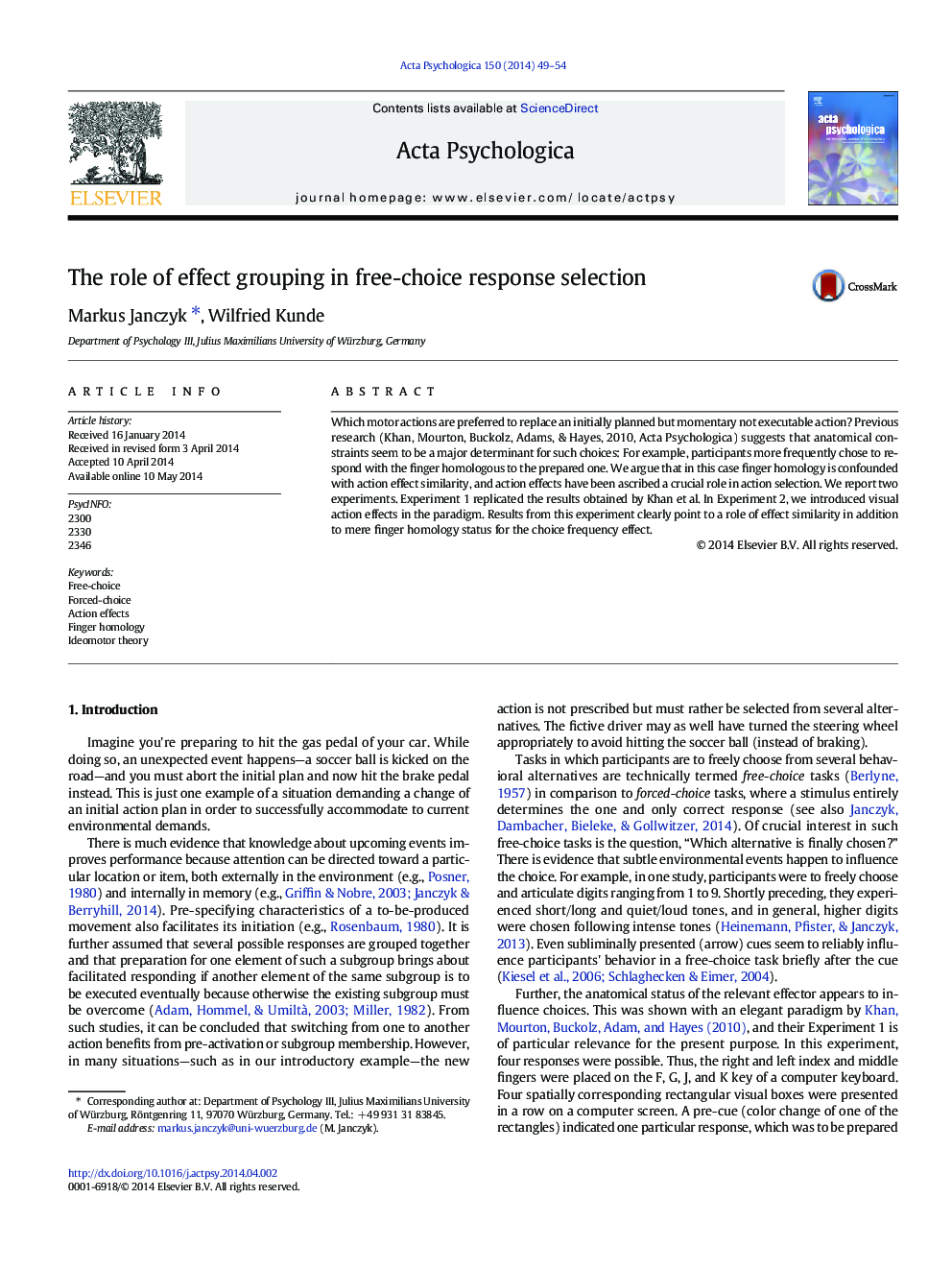| Article ID | Journal | Published Year | Pages | File Type |
|---|---|---|---|---|
| 919730 | Acta Psychologica | 2014 | 6 Pages |
•Humans sometimes need to choose an alternative action.•Previous research identified anatomical constraints as determinants of this choice.•Finger homology, however, is confounded with effect similarity.•Ideomotor theories ascribe to action effects a crucial role in action selection.•We show that action effects play also a considerable role as a choice determinant.
Which motor actions are preferred to replace an initially planned but momentary not executable action? Previous research (Khan, Mourton, Buckolz, Adams, & Hayes, 2010, Acta Psychologica) suggests that anatomical constraints seem to be a major determinant for such choices: For example, participants more frequently chose to respond with the finger homologous to the prepared one. We argue that in this case finger homology is confounded with action effect similarity, and action effects have been ascribed a crucial role in action selection. We report two experiments. Experiment 1 replicated the results obtained by Khan et al. In Experiment 2, we introduced visual action effects in the paradigm. Results from this experiment clearly point to a role of effect similarity in addition to mere finger homology status for the choice frequency effect.
